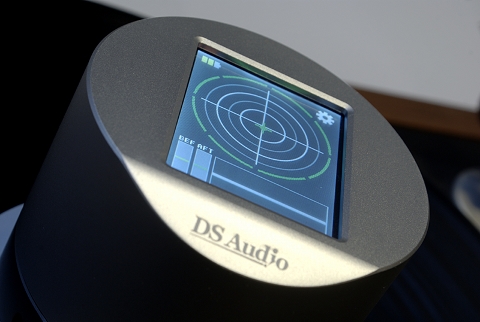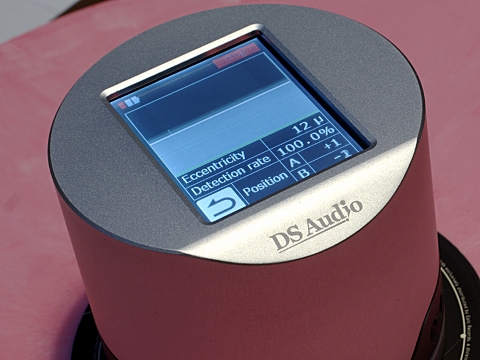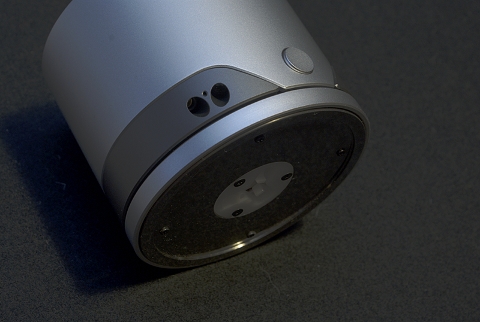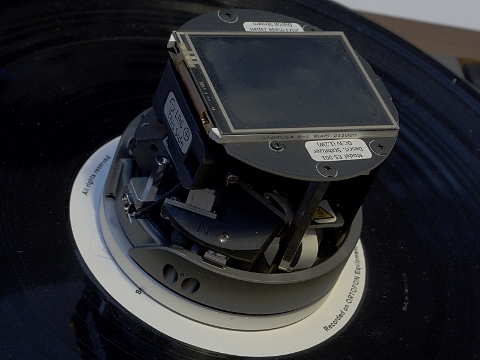about Audio, High Fidelity
& Home Entertainment technologies
pid: 607-2025/10/01 (v1.2)
Privacy Policy

Let's start from the beginning: Vinyl records aren’t made by eye and good intentions. There are specifications that define the limits of their construction. For example, the diameter of the hole must be 7.24mm with a tolerance of -0mm/+0.09mm. This means the diameter can reach up to 7.33mm but cannot be smaller than 7.24mm, for obvious reasons. At the same time, the spindle of the turntable can have a diameter between 7.05 and 7.15mm. Do the math: 7.24+0.09=7.33 and 7.33-7.05=0.28. If a record with the maximum tolerance in its center hole is placed on a spindle with the minimum allowable diameter, there will be a gap of 0.28mm. With these dimensions, the system's eccentricity (the distance between the two actual centers, of the spindle and of the record) reaches 0.14mm. This is assuming, of course, that the hole is exactly in the center of the record. But it's not… The specifications allow a tolerance of 0.20mm for the position of the record’s center. So in the worst case, the eccentricity will reach 0.14+0.20=0.34mm. Such a value may not cause audible issues by itself, but it significantly contributes to both wow & flutter and the transient response of the cartridge/tonearm system, which now has a horizontal motion component that is not accounted for. The result is that the performance of an analog source ultimately depends on the quality of the record itself.
This is the main screen that the user sees. The goal is to move the record in such a way that the cross reaches exactly the center. There is an indication for "before" and "after" to provide a sense of correction, as well as a graphical representation of the eccentricity.
Now, imagine the spindle of the turntable with a diameter of 7.05mm, and a record with a hole diameter of 7.33mm, creating a gap of 0.28mm. In the worst case, the spindle touches one side of the hole, so on the opposite side, there is a gap of 0.28mm, and the system's eccentricity is at its maximum. In the ideal case, the gap might be 0.14mm, evenly distributed around the circumference of the hole and spindle. The record is perfectly centered, and the eccentricity is zero. If the hole is off-center, this condition doesn't apply. You would need to move the record, as much as the gap allows, to a position that compensates for the overall eccentricity. Based on the previous paragraph, we have a maximum "space" of 0.34mm to do this. Do you have the precision to move the record within this range? Most likely not, but, in any case, the dimensions are so small that it will feel as if the record isn't moving at all. In reality, if you feel the record moving around the spindle, you should return it. It's completely out of spec! But even if such movements were possible, how would you know if you made the correct adjustment? This is where the ES-001 comes in to solve all these problems.
The measurement can be displayed using numbers. The eccentricity is 12μm, with the measurement having been successful (100%), and there is also an indication of the distances from the two sensors (A and B). Sometimes, it is convenient to make the correction by observing these values.
The DS Audio device is large, complex, and accordingly expensive, with a screen, batteries, and an On/Off switch—all unusual features for a clamp. However, the last thing you want the ES-001 for is to "clamp" the record onto the turntable's spindle. It does that too, but its talents lie elsewhere. First of all, its construction is complex. It's made of metal, aluminum, and tungsten and the top part can rotate relative to the bottom (which is placed on the turntable spindle).
On the top, there are two pairs of sensors that detect the lead-out groove of the record. Each pair includes an infrared LED and a corresponding sensor. The two pairs are positioned at a 90-degree angle to each other. As the record spins, the user holds the top part of the clamp steady, and the detection system calculates the eccentricity of the record within a few seconds. This is displayed, both numerically and graphically, on the color screen located on top. A cross shows the actual center of the record, and at the center of the screen (in the middle of a series of concentric circles) is the desired center.
The bottom of the clamp, comes into contact with the record and rotates with it. One of the two pairs of sensors is also visible.
Now it’s your turn to do something. By gently (and with care—you’ll learn with a little practice) nudging the record, you try to bring the cross to the center. Color coding that starts with red (significant eccentricity), moves to yellow (noticeable eccentricity), and reaches green and, ultimately, the center (stay where you are, zero eccentricity!) informs you of the result of your adjustments. Once you reach the center, or very close to it, you’re done. The record is as centered as possible on the spindle, and you can start playback. Based on this, it’s clear that the ES-001 does not correct eccentricity (as the Nakamichi did) but calculates it and can display the effectiveness of the user’s corrective movements, down to a fraction of a millimeter. You’ll need patience and a steady hand to make those adjustments!
For the operation of the ES-001, two batteries are required. The company provides two pairs of rechargeable AA batteries from Panasonic, along with the appropriate charger.
Previous | Next | More Reviews







